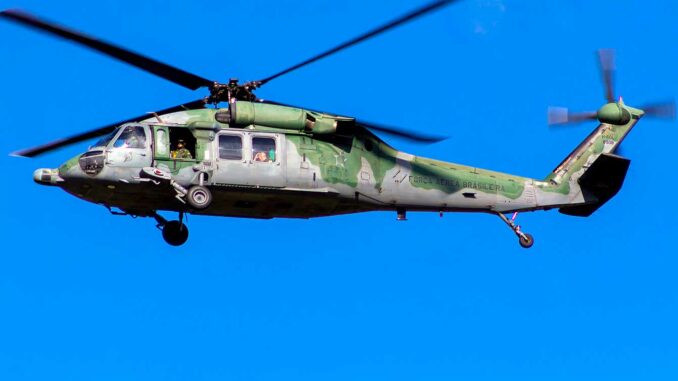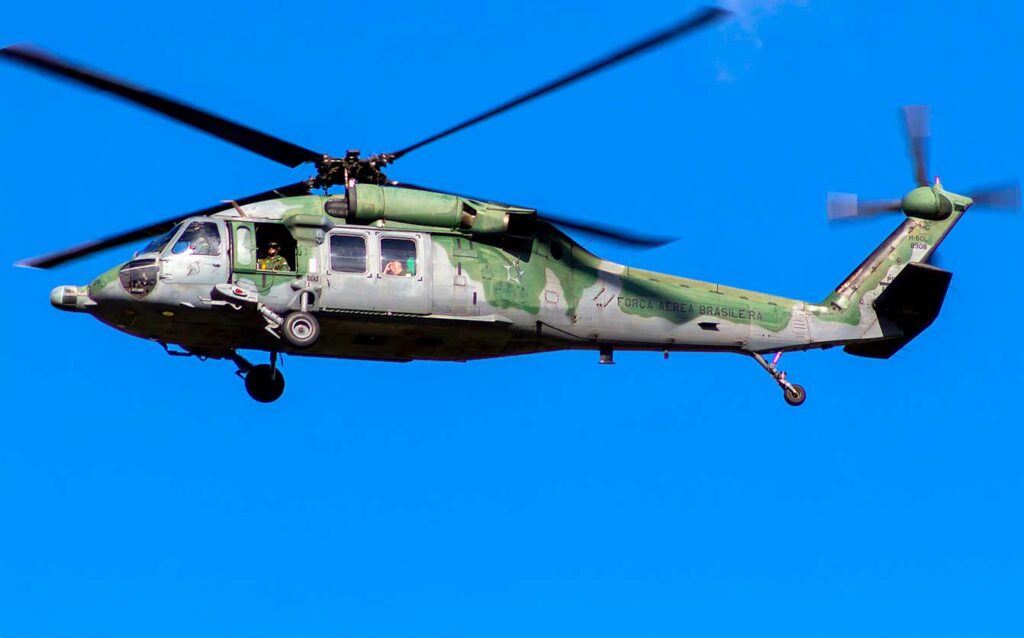
A UH-60 shot down in Antioquia: an armed drone used by FARC dissidents highlights an emerging threat to security aviation.
A Colombian National Police UH-60 Black Hawk helicopter was shot down on August 21, 2025 during a manual coca eradication mission in Amalfi, in the department of Antioquia. An FPV-type explosive drone appears to have been used by FARC dissidents, killing 12 to 13 police officers. The incident highlights the increased vulnerability of aircraft to armed drones, a trend observed globally. Since April 2024, more than 301 drone attacks have targeted Colombian forces, killing at least 22 people.
Background to the attack
On August 21, 2025, a Sikorsky UH-60 Black Hawk helicopter belonging to the Colombian National Police was destroyed in flight while supporting a coca eradication mission in rural areas of Amalfi (Antioquia). Sources differ slightly: some report 12 police officers killed, others up to 13 dead and 3 survivors wounded. The governor of Antioquia, Andrés Julián Rendón, confirmed the probable involvement of an FPV-type explosive drone. President Gustavo Petro initially referred to a buried mine or IED, but the consensus is leaning toward a drone attack ([turdef.com][3]). This operation was part of an ongoing fight against illicit coca cultivation, which covered approximately 253,000 hectares in 2023 according to the UNODC.
The rise of armed drones and their implications
This attack reflects a major transformation of the battlefield: armed groups—cartels or dissidents—are adopting modified recreational drones capable of carrying explosive payloads. These devices, costing a few hundred euros, surpass traditional heavy systems (MANPADS, guided missiles) in agility, discretion, and accessibility. Since April 2024, the ministry claims to have suffered 301 drone attacks, mainly in the departments of Cauca and Norte de Santander, killing at least 22 soldiers and police officers, in addition to civilians wounded. These drones can be piloted via FPV (first-person view), sometimes even via fiber optic cable, making them undetectable by radar and immune to conventional jamming. Colombian groups have even reportedly been trained in the use of these technologies in Ukraine or Venezuela, with the alleged help of Russian contractors.
Military challenges and international reactions
The threat of explosive drones has led some countries to reevaluate their acquisitions. In South Korea, a multi-billion dollar contract for 36 Apache AH-64E helicopters has been canceled, as their vulnerability to drones was deemed excessive. Conversely, Poland has ordered 96 Apaches, banking on improved countermeasures against UAS. Technically, modern Blackhawks are equipped with defensive systems (missile alerts, IR decoys, DIRCM devices), but they remain vulnerable to small, fast, and close-range stealth drones. Proposed solutions include electronic warfare, specific short-range radars and anti-drone interceptors, but these are still limited and not widely used. The Colombian incident illustrates a complex operational reality: in mountainous and isolated areas, helicopters are vulnerable targets when approaching or landing without adequate protection.

The consequences for internal security and the fight against drugs
The impact is as symbolic as it is strategic. The attack demonstrates the growing risk posed by armed drones to law enforcement and illicit crop eradication missions. The fact that a helicopter was shot down during a public mission reinforces the use of violence by FARC dissidents or the Clan del Golfo to maintain territorial control and cocaine trafficking. The human toll is heavy (12 to 13 dead, several wounded), but the psychological impact on security forces is undoubtedly even deeper. It calls for a rethink of air strategies, with stronger defensive equipment, more anti-UAS defenses, or other options like friendly drones, ground support, or advance reconnaissance. Politically, this attack also undermines peace efforts. It comes at a time of ceasefire and negotiations, but highlights the persistence of organizations capable of striking with sophisticated means. The government must act: technological adaptation, international cooperation, training, drone regulation, and support for vulnerable areas.
War Wings Daily is an independant magazine.